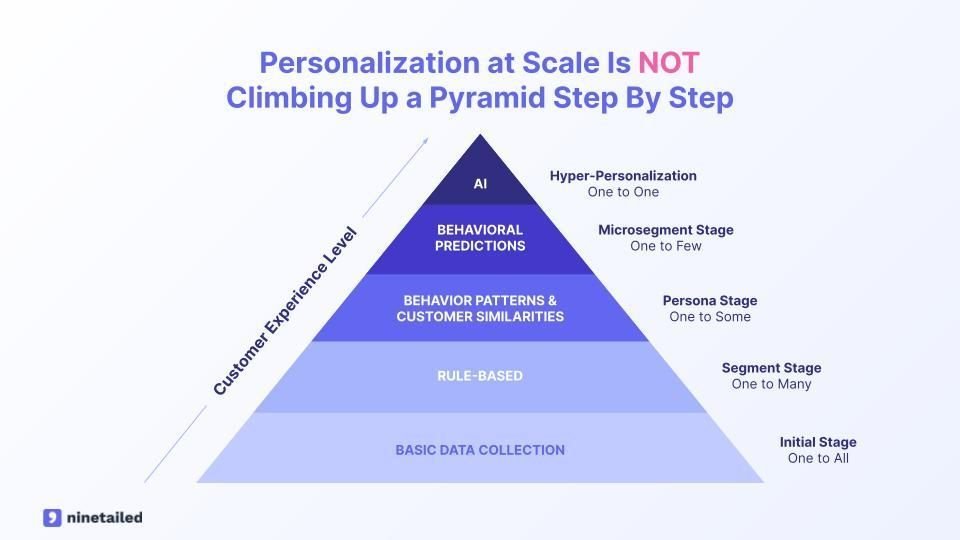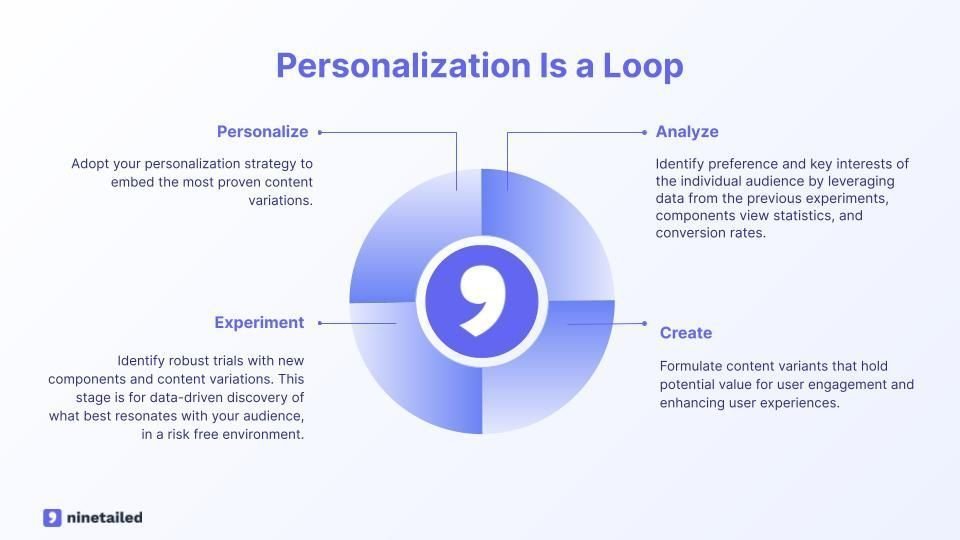By Janus Boye
Alex Net is General Manager a Infinitum Digita, a Barcelona-based digital agency
How can you best leverage personalisation to create effortless and meaningful digital experiences?
You’ve probably already heard statements and numbers like the below:
Personalisation is the key to success!
Businesses that leverage personalisation gain a competitive edge and drive higher engagement, allowing them to better connect with potential customers
According to research by McKinsey, personalisation often results in a 10 to 15 percent increase in revenue
Google found that 90% of leading marketers say personalisation significantly contributes to business profitability
Research from Accenture says that 91% of consumers are more likely to shop with brands that recognize, remember, and provide relevant offers and recommendations
Personalisation is one of those topics we keep coming back to in our community. To some, it’s the notorious next phase, while we also have members who have taken it quite far and built business-critical experimentation and personalisation practices.
In a recent members' call we heard 10 takeaways on successful personalisation presented by Alex Net at Infinitum Digital, a digital agency based in Barcelona, Spain. Alex has years of experience in the field, in particular from large and complex customer projects in tourism and higher education.
Alex opened by setting the stage with this quote:
“Personalisation is about removing friction in the visitor journey”
Let’s get to Alex’s list and dive into it.
10 lessons learned about personalisation
Alex presented us with this list:
Assess your positioning: How your company is perceived in the mind of decision makers will limit or amplify your chances
Double check preconditions: Highlighting the importance of understanding your requirements, user personas, customer journeys, information architecture and also the user experience
Use a framework: Infinitum has their own framework and there are established industry methods out there, including one from Ninetailed. See more on this below from the Q&A
Do risk analysis: Recognise that as you move from the initial stage to towards hyper personalisation, things also gets more risky
Know your stakeholders: While your tech colleagues are facing AI hype, your marketing colleagues are overwhelmed
Ensure team readiness: Complex setups require complex profiles. Infinitum has deep experience working with modern tools like Raptor as CDP, Ibexa as DXP and Actito for customer activation and when you are selecting your partner, make sure they are ready and experienced.
Verify tech stack: Zoom out and have the complete picture in mind, from how the editors will work with content, via analytics, the mobile experience and everything else required for your initiative
Create scenarios: Consider the opportunity and start with the hypothesis. What is the question or experiment you are trying out? What might/will provide added value? Alex shared a wellness case study here that you can find in the slides (see link below)
Define success: What will it look like and how do you track it and follow up to realise the benefits
Create a mid-term plan: A roadmap to help you prioritise the next steps on the journey
Personalisation is a loop and more emerging insights
After a run through of the list, Alex referenced recent thinking by Andy Kaiser at Berlin-based personalisation vendor Ninetailed making the point that it can be helpful to see personalisation as a loop more so than a traditional maturity scale.
Alex Net weaved in recent thinking by Andy Kaiser from Ninetailed saying that personalisation is far more dynamic than a linear progression.
The main point is: Once an implementation is complete, you return to the beginning to analyse the acquired data, discuss new ideas and hypothesise improvements.
Consider the illustration above with a pyramid in the shape of a traditional maturity scale versus the other one below with a continuous learning and experimentation loop making it possible to create meaningful personalisation experiences.
Personalisation is a loop - via Andy Kaiser, Ninetailed
As a part of the closing of the call, we also talked about focusing on reducing the time-to-value. What can be achieved in 3 weeks rather than 2 months? Prove the value and then move on to bigger things.
Alex also mentioned the importance of educating customers about the experimental nature of personalisation and preparing them for the iterative process. He recommends an agile approach to test and iterate quickly and reiterated the challenge of proving ROI in personalisation: You need clear objectives and the use of qualitative measures, in particular when monetary conversion is not the primary goal.
Learn more about personalisation
We’ve covered personalisation in the past and here’s just a few posts to continue your learning journey:
Enough with the mumbo jumbo (2015)
For a refreshingly honest take, Will Noble who’s now at digital content creation vendor Foleon, joined our annual Cambridge Summit in late 2023 and shared what we got wrong with website personalisation in 2014.
The conversation on personalisation naturally continues in our peer groups and at our upcoming conferences. Join us and be a part of the conversation.
You can also download the slides (PDF) or even lean back and enjoy the entire recording below.



